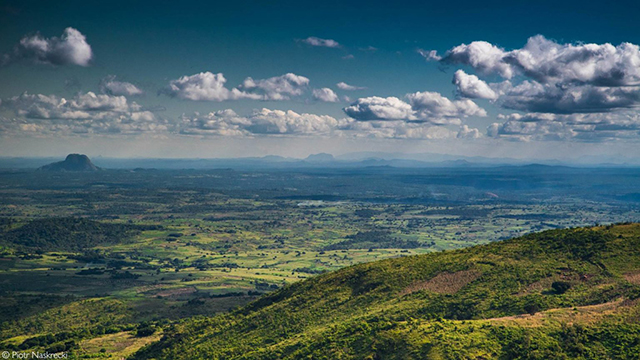This material was originally published by Africa Geographic Stories on April 21, 2021.
By Greg Carr
The following is the foreword by Greg Carr to a recently re-published thesis by Dr. Ken Tinley who developed an ecological model for Gorongosa National Park in Mozambique. The magnificent thesis was completed in 1977 and remains relevant to this day.
INTRODUCTION
I saw Gorongosa National Park for the first time from a helicopter on March 30, 2004. It looked magnificent from above.There were multiple forest and woodland types, grasslands, rivers, a lake, and fascinating geological formations. When we landed, however, it was clear we had trouble. The historic Chitengo Camp lay in ruins — former buildings were rubble. Where tourists once wandered, burned-out vehicles lay amongst grass that was higher than my head. That year, the Mozambican government asked me to help restore Gorongosa, once one of the most popular wildlife parks in all of Africa.


PROCESS AND RESPONSE
In the 1960s, scientists said that Gorongosa had the densest abundance of wildlife of any natural area on the continent. This was no longer true. On our visit in 2004, we could drive an entire day and see perhaps one warthog or one baboon. Whatever other wildlife there was hidden in dense forests and had every reason to fear vehicles. Approximately 95% of the large animals were killed during and in the aftermath of one generation of war. How could we possibly restore a landscape of 400,000 hectares (one million acres)?
If we were going to help the Government of Mozambique re-wild this ecosystem, we needed to understand it. We needed to create a Park Management Plan.
My very small team and I searched the literature. We found popular accounts of Gorongosa in newspapers and even in the prestigious National Geographic Magazine, dating back to the early 1960s. However, we also needed scientific data. A Harvard University friend found a reference to a doctoral thesis called Framework of the Gorongosa Ecosystem published in 1977 by a Kenneth Lochner Tinley, but not the actual thesis. At the time, Google was a ‘child,’ just six years old, and one did not find nearly every imaginable piece of information online. We learned that a physical copy of the thesis existed at the University of Pretoria, South Africa. We used ‘interlibrary loan’ to get that actual document (not a facsimile) sent by the postal service to Harvard and then to us. Helping me was Sydney Kwiram—a brilliant young woman and recent Harvard graduate.
The manuscript’s abstract included this paragraph: “The chapter titled ‘Process and Response’ is the central pivot of the thesis containing the kinetic aspects of geomorphological landscape changes with coevolutionary sequences of biotic communities which change (expand, contract and recombine) kaleidoscopically in space and time, in appearance and content.”
Wow. I am not a biologist. I wondered if I should return to the friendly, popular newspaper articles about Gorongosa! However, the Tinley masterpiece is written by an incredible hand. It is the kind of literature that a layperson can follow if one reads carefully, even as an expert will gather much more from the same page. Sydney and I devoured this tome. The thesis had chapters on landscape setting, geology, soils, hydrology, climate, wildlife—covering an area in central Mozambique larger than the Park boundaries themselves—under the labels of “Gorongosa Mountain Summit”, “Gorongosa Mountain Slopes”, “Midlands”, “Rift Valley”, “Coast Plateau”, and “Land-sea Junction”. There were graphs of data and hand-drawn maps by Dr. Tinley. He did all of this prior to the existence of the personal computer, GPS, digital photography, drones and the Internet. He with his spouse, Lynne Tinley, and their two small children lived in Chitengo (the place where I had landed in March 2004) from 1968 to 1973.
WHERE ON EARTH IS DR. TINLEY?
We had the document, but what about Ken Tinley? Was he still alive? Did he live in South Africa? We would not find those answers in 2004.

